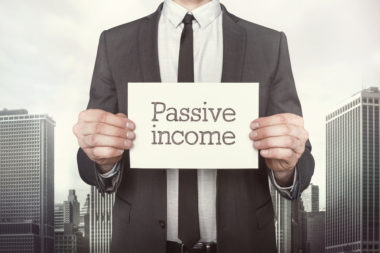New York public employees have access to one of the three largest pension funds in the U.S. One of the most significant benefits of becoming a public employee is gaining access to generous retirement plans. The system includes more than 300 employers and has over a million members, making it one of the largest state retirement systems in the country.
New York’s state retirement system certainly offers a lot of positives and benefits that private-sector professionals do not enjoy. However, you need to understand the nuances of the NYS retirement system and its pension plans. For example, employees belong to different tiers depending on factors such as where they work or how long they have been public employees.
When you work in public services in New York state, you need to understand the retirement system because it can help inform your career choices and tell you what to expect as you prepare for retirement.
Table of Contents
Types of Retirement Systems in New York
New York has different retirement options for public employees. These retirement systems are all part of the larger state system.
The retirement plan that you get depends on your employer, the sector in which you work, and, in at least one case, how much you earn.
In some cases, you may be eligible to transfer your retirement plan if you move from one public service job to another that also gets covered by the state retirement system.
New York State and Local Police and Fire Retirement Systems (PFRS)
The New York State and Local Police and Fire Retirement System (PFRS) is for firefighters and eligible state and local police personnel. To be a part of the PFRS, you need to work for a participating employer. Some fire and police departments do not participate in the program. For example, police employees in New York City are a part of the New York City Police Pension Fund rather than the PFRS.
In addition to retirement benefits, members of the PFRS also get death benefits. The New York State Comptroller oversees this retirement program.
New York State and Local Employees’ Retirement System (ERS)
The New York State and Local Employees’ Retirement System (ERS) offers retirement plans to several different groups of public employees. One of the unique aspects of this system is that part-time workers can also get a retirement plan. Like the PFRS, the ERS offers retirement and death benefits.
ERS provides pensions to state and local employees in a variety of non-teaching professions. You need to work for a participating employer. As with the PFRS, New York City employees have a separate retirement system, so they do not participate in the ERS.
Who uses ERS retirement plans? Some law enforcement workers, such as corrections officers and employees of sheriffs departments, have an ERS retirement plan. Other groups who get their pensions through the ERS include NYS Public Employees Federation (PEF) members and workers who are a part of the Civil Service Employees Association (CSEA).
New York State Teachers’ Retirement System (NYSTRS)
Educators in New York State who work for participating employers can get retirement benefits from the New York State Teachers’ Retirement System. This retirement system includes teachers at participating public school districts throughout the state. Some teachers, such as those who work at New York City public schools, are not eligible to get a retirement plan from the NYSTRS because they have access to a city-run retirement plan.
In addition to teachers, school counselors, assistant teachers, and administrative workers can also get retirement benefits through this system. Part-time teachers and substitute teachers qualify to earn benefits as long as they work for a participating school district.
Even when on its own, the NYSTRS is one of the 10 largest public pension systems in the country.
Optional Retirement Program (ORP)
The Optional Retirement Program (ORP) is for employees who work in higher education. For example, members of the United University Professions (UUP) union are eligible to get retirement benefits through the ORP.
Employees who work in the State University of New York (SUNY) system can participate in the ORP. Workers who the state classifies as Management/Confidential (MC-13) can also get pension plans through this program.
Some part-time employees are eligible for the ORP, as are some contractors who work for the state’s community college system.
New York State Voluntary Defined Contribution Plan (VDC)
The Voluntary Defined Contribution Plan is for employees in the state who work for participating public employers but are not eligible for other programs.
This particular retirement plan has income and hiring requirements. For example, the VDC plan is for employees who started working after July 1, 2013. Also, they must make at least $75,000 per year to qualify for this plan.
New York State Benefit Tier List
The PFRS, ERS, and NYSTRS all operate under a tiered retirement plan system. Each tier has different benefits, and your tier level depends on the amount of time you have worked. Your tier level can affect variables such as vesting (ownership of your pension), retirement age, amount of paycheck contributed to retirement and percentage of benefits that you accrue.
| Tier | Date Joined | Required Contribution | Age for Full Benefits | Age for Partial Benefits |
| 1 | Before July 1, 1973 | No contribution required | 55 years old | N/A |
| 2 | July 1, 1973 to July 26, 1976 | No contribution required | 62 years old or after 30 years of service | 55 years old |
| 3 | July 27, 1976 to Aug. 31, 1983 | 3% of pre-tax salary for 10 years | 62 years old or after 30 years of service | 55 years old |
| 4 | Sept. 1, 1983 to Dec. 31, 2009 | 3% of pre-tax salary for 10 years | 62 years old or after 30 years of service | 55 years old |
| 5 | Jan. 1, 2010 to Mar. 21, 2012 | 3% of salary until retirement | 62 years old | 55 years old |
| 6 | After April 1, 2012 | Between 3% and 6% until retirement, depending on salary | 63 years old | 55 years old |
Retirement Taxes in New York
Federal and state taxes can affect your retirement plan. These taxes work a little differently than standard income tax, so you need to understand how they function when planning for your retirement.
Both federal and state taxes can affect your retirement accounts
Federal
You have to pay federal income tax on the money that you receive from your pension. When you get income from a pension after retirement, it gets taxed as regular income. However, you usually do not have to pay taxes when you contribute money to your account.
You can normally choose to have your retirement income taxes withheld from each check if you choose to get monthly disbursements. You can also opt to make estimated monthly tax payments to the IRS. If you do not wish to use either of these options, you will have to pay a lump sum on Tax Day each year.
State
If you have a pension through the New York state system, you do not need to pay income tax when you receive money from your retirement account after you retire. However, if you move to another state after retirement, you may have to pay income tax.
Some states, such as Florida and Nevada, do not have income taxes at all. Other states, including Pennsylvania and New Hampshire, do not charge pensions from public systems. The Retired Public Employee Association lists the tax rules for pensions for each state.
Financial Health of the New York State Retirement System
The New York State and Local Retirement System (NYSLRS) has more than one million members, and it was worth $210.5 billion at the end of the last fiscal year. The retirement fund paid out more than $12 billion last year to nearly half-a-million retirees and beneficiaries.
Seventy-five percent of the benefits that the system pays to retirees come from investment earnings rather than from money contributed by employers and workers. The retirement fund’s investments return 5.23% per year, on average.
New York does not charge state income tax on payments from retirement system pensions. However, retirees still have to pay federal taxes.
The New York State comptroller oversees the pension system. All investments that the system makes become public, and a Special Counsel for Ethics audits investment activities to ensure complete transparency.
New York State Online Retirement Estimation
You can start planning your pension and retirement by using an online NYSLRS tool that lets you estimate your pension. In addition to seeing how much you can earn, you may adjust the retirement date to see how it affects your pension payments. You may also change earnings data and years of service to see how these variables affect benefits.
If you are making a choice about a career change or promotion, you can see how the different job options could affect your benefits and your retirement plans.
Tips for Retirement
Even if you have a great pension plan, you still need to take careful steps to both prepare for retirement and manage your benefits after retirement.
You can take the following specific steps to prepare for retirement:
- You need to choose between a pension, which manages your investments, and a 401(k), which is a retirement account that allows you to control your investments. This decision depends on how much control you want over the investments that will ultimately decide how much income you have upon retirement.
- One of the most important steps that you can take to prepare for retirement is to start saving right now. Any amount that you contribute to your retirement account now will grow by earning interest or getting returns on investment.
- Start paying off your debts now. If you’re able to get control of debts from loans, mortgages, and credit cards, you will not have to use your retirement benefits to deal with debts after you retire.
You can also take the following steps to manage your finances after you retire:
- After retirement, make sure that you have comprehensive health coverage so that medical bills do not eat into your pension and retirement savings.
- You need to have a plan for income taxes. You must pay federal income tax on your pension payments. You will need to arrange regular payments or set money aside to pay taxes on Tax Day.
- You may also opt for an annuity, which provides regular monthly payments. If you have a pension, you get one lump sum payment that you can withdraw all at once or at regular intervals. Though annuities do not offer access to capital like pension payments, they provide income stability and help you ensure that you can cover daily costs.
Image Source: https://depositphotos.com/





